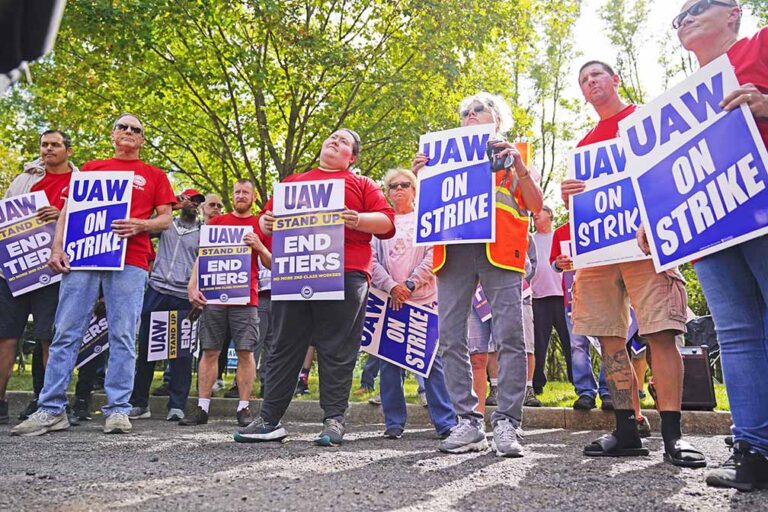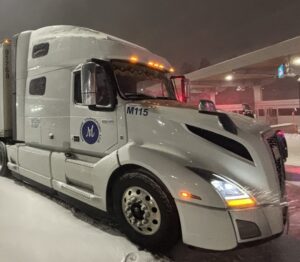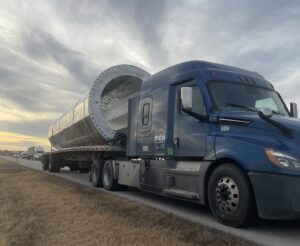The UAW strike is growing, again. What to know as 7,000 more auto workers join the union’s walkouts
NEW YORK — The United Auto Workers strike against Detroit automakers has spread to dozens of facilites nationwide. And the walkouts are deepening.
The UAW’s targeted strikes against General Motors, Stellantis and Ford began at select plants after the union’s contract with the companies expired two weeks ago. The union vowed to grow the walkouts if it did not receive what it calls substantially improved contract offers — and the picket lines have gotten bigger since.
In a Friday, Sept. 29, announcement, UAW President Shawn Fain said the strike will spread to 7,000 more workers at a Ford plant in Chicago and a General Motors assembly factory near Lansing, Michigan at noon Friday — meaning that some 25,000 workers (about 17% of the unions’ 146,000 members) will soon be striking across the country.
Fain told workers on a video appearance that negotiations haven’t broken down, but Ford and GM have “refused to make meaningful progress.” Stellantis was spared from the third round of strikes — with Fain pointing to progress made “moments” before the broadcast with the Jeep maker agreeing to unspecified cost-of-living pay raises, the right not to cross a picket line and the right to strike over plant closures.
The UAW is seeking big raises and better benefits — pointing to CEO pay raises and profits that the three companies have raked in recent years. They also want to get back concessions that the workers made years ago.
Meanwhile, the Detroit Three have said they can’t afford to meet the union’s demands because they need to invest profits in a costly transition from gas-powered cars to electric vehicles. Tensions rose in recent weeks as the companies laid off a thousands of workers, saying some factories are running short on parts because of the strike.
On the consumer side, with no immediate end in sight, the strike could also cause significant disruptions to auto production in the United States down the line. Here’s a rundown of what you need to know.
WHAT DO WORKERS WANT?
The union is asking for 36% raises in general pay over four years — a top-scale assembly plant worker gets about $32 an hour now. In addition, the UAW has demanded an end to varying tiers of wages for factory jobs; a 32-hour week with 40 hours of pay; the restoration of traditional defined-benefit pensions for new hires who now receive only 401(k)-style retirement plans; and a return of cost-of-living pay raises, among other benefits.
Perhaps most important to the union is that it be allowed to represent workers at 10 electric vehicle battery factories, most of which are being built by joint ventures between automakers and South Korean battery makers. The union wants those plants to receive top UAW wages. In part that’s because workers who now make components for internal combustion engines will need a place to work as the industry transitions to EVs.
Currently, UAW workers hired after 2007 don’t receive defined-benefit pensions. Their health benefits are also less generous. For years, the union gave up general pay raises and lost cost-of-living wage increases to help the companies control costs. Though top-scale assembly workers earn $32.32 an hour, temporary workers start at just under $17. Still, full-time workers have received profit-sharing checks ranging this year from $9,716 at Ford to $14,760 at Stellantis.
Fain himself has acknowledged that the union’s demands are “audacious.” But he contends that the richly profitable automakers can afford to raise workers’ pay significantly to make up for what the union gave up to help the companies withstand the 2007-2009 financial crisis and the Great Recession.
Over the past decade, the Detroit Three have emerged as robust profit-makers. They’ve collectively posted net income of $164 billion, $20 billion of it this year. The CEOs of all three major automakers earn multiple millions in annual compensation.
WHAT HAVE THE COMPANIES PROPOSED?
The automakers have moved closer to the UAW’s demands on wages, but a big gulf remains.
The automakers’ last known wage offers were around 20% over the life of a four-year contract, a little more than half of what the union has demanded. Other contract improvements, such as cost of living increases, restoration of defined benefit pensions for newly hired workers and an end to tiers of wages within the union are also on the table.
The companies have rebuffed the union’s demands as too expensive. They say they will spend vast amounts of capital in the coming years to continue to build combustion-engine vehicles while at the same time designing electric vehicles and building battery and assembly plants for the future, and can’t afford to be saddled with significantly higher labor costs.
They also contend that a lavish UAW contract would force up the retail prices of vehicles, pricing Detroit automakers above competitors from Europe and Asia. Outside analysts say that when wages and benefits are included, Detroit Three assembly plant workers now receive around $60 an hour while workers at Asian automaker plants in the U.S. get $40 to $45.
In a note to workers on Friday, following UAW announcing its strike expansion, GM manufacturing chief Gerald Johnson wrote that calling more strikes “is just for the headlines, not real progress.”
The company said it has not yet received a counter offer from union leaders to an economic proposal it made on Sept. 21.
“We continue to stand ready and willing to negotiate in good faith to reach an agreement that benefits you and doesn’t let the non-union manufacturers win,” Johnson wrote, calling the counter offer a record proposal with historic wage increases and job security.
Ford scheduled a 1 p.m. briefing for industry analysts and reporters to discuss the talks.
WILL A STRIKE CAUSE CAR PRICES TO RISE?
Eventually. Ahead of the strike, GM, Ford and Stellantis were running their factories around the clock to build up supplies on dealer lots. But that also put more money into the pockets of UAW members and strengthening their financial cushions.
At the end of August, the three automakers collectively had enough vehicles to last for 70 days. After that, they would run short. Buyers who need vehicles would likely go to nonunion competitors, who would be able to charge them more.
Vehicles are already scarce when compared with the years before the pandemic, which touched off a global shortage of computer chips that hobbled auto factories.
Sam Fiorani, an analyst with AutoForecast Solutions, a consulting firm, said the automakers had roughly 1.96 million vehicles on hand at the end of July. Before the pandemic, that figure was as high as 4 million.
Today, the strike’s impact is not yet being felt on car lots around the country — it will probably take a few weeks before we see any significant shortage of new vehicles, according to analysts. Prices could rise even sooner, however, if the prospect of a prolonged strike triggers panic buying.
COULD A STRIKE HURT THE ECONOMY?
Yes, if it’s long and especially in the Midwest, where most auto plants are concentrated. The auto industry accounts for about 3% of the U.S. economy’s gross domestic product — its total output of goods and services — and the Detroit automakers represent about half of the total U.S. car market.
During walkouts, workers are set to receive about $500 a week in strike pay — far short of what they earn while they’re working. As a result, millions of dollars in wages would be removed from the economy.
The automakers would be hurt, too. Just 10 days of the strike, which has already been surpassed, could cost them nearly a billion dollars alone, the Anderson Economic Group previously calculated. During a 40-day UAW strike in 2019, GM lost $3.6 billion.
The union has structured its walkout in a way that has allowed the companies keep making pickup trucks and large SUVs, their top-selling and most profitable vehicles. Previously it shut down assembly plants in Missouri, Ohio and Michigan that make midsize pickup trucks, commercial vans and midsize SUVs, all of which are profitable but don’t make as much money as the larger vehicles.
WHICH SIDE HAS THE ADVANTAGE?
It’s hard to say. The companies have plenty of cash on hand to withstand a strike. The union’s strike fund was worth $825 million before Sept. 14. But it would be depleted in less than three months if all 146,000 workers were to walk out, and that’s without factoring health care costs.
That’s where the targeted strikes come in — helping the union stretch its money if the walkout persists into this winter.
In the past, the union had picked one company as a potential strike target and reached a contract agreement with that company that would serve as a pattern for the others. But this year Fain introduced a novel strategy of targeting a limited number of facilities at all three automakers, while threatening to add more if the companies do not come up with better offers.
Still, the union’s inability to organize U.S. factories run by foreign automakers represents a disadvantage for the union because those companies pay less than Detroit companies do.
But organized labor has been flexing its muscles and winning big contract settlements in other businesses. In its settlement with UPS, for example, the Teamsters won wages for its top-paid drivers of $49 an hour after five years.
So far this year, 247 strikes have occurred involving 341,000 workers — the most since Cornell University began tracking strikes in 2021, though still well below the numbers during the 1970s and 1980s.
The Associated Press is an independent global news organization dedicated to factual reporting. Founded in 1846, AP today remains the most trusted source of fast, accurate, unbiased news in all formats and the essential provider of the technology and services vital to the news business. The Trucker Media Group is subscriber of The Associated Press has been granted the license to use this content on TheTrucker.com and The Trucker newspaper in accordance with its Content License Agreement with The Associated Press.















